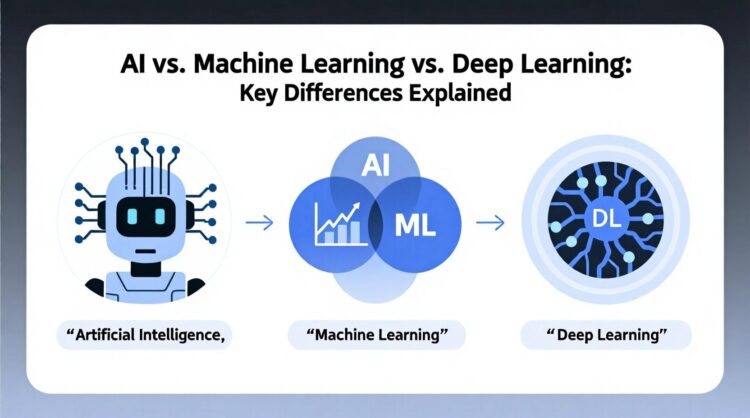
HowToFOrYou.com – businesses face one undeniable reality: strategy can no longer be a once-a-year exercise. As industries shift at lightning speed, organizations that cling to outdated methods risk losing relevance. The difference between companies that thrive and those that decline often comes down to their ability to adapt and increasingly, that adaptability is powered by artificial intelligence (AI).
Why Traditional Strategy Falls Short
For decades, strategic management relied on long planning cycles, static forecasts, and historical data. While effective in stable environments, these approaches are less suited to modern markets characterized by rapid innovation, global disruption, and unpredictable consumer behavior. Slow response times leave companies vulnerable to missed opportunities and unforeseen risks.
This has given rise to a new model: the “always-on” strategy — an agile, data-driven process that evolves continuously. At the heart of this transformation is AI, which equips organizations with tools to analyze real-time information, anticipate changes, and make smarter, faster decisions.
The Role of AI in Modern Strategy
AI is not simply a supporting tool; it is becoming central to how companies design, test, and execute strategies. Its applications extend across multiple aspects of management, including:
-
Market Analysis: Machine learning algorithms process vast datasets to detect emerging trends and potential threats before they become visible to competitors.
-
Competitive Intelligence: AI tracks rivals’ moves, helping firms anticipate market shifts and position themselves proactively.
-
Customer Insights: Predictive models reveal evolving consumer behaviors, enabling personalized marketing and product development.
-
Resource Optimization: AI ensures capital and talent are allocated where they will have the greatest impact.
-
Scenario Planning: By simulating multiple future outcomes, AI allows executives to prepare for uncertainty with greater confidence.
The result is a shift from reactive planning to proactive innovation, where organizations not only respond to change but actively shape it.
Addressing Common Concerns
Despite its benefits, AI adoption in strategic management is often met with skepticism. Executives worry about replacing human judgment, losing creativity, or relying too heavily on opaque algorithms. These concerns are valid — but they overlook a key point: AI is not meant to replace leadership. Instead, it augments human decision-making by uncovering patterns and possibilities that are invisible through traditional analysis.
When used responsibly, AI reduces bias, accelerates decision-making, and frees strategists to focus on creativity and long-term vision. The most effective strategies combine AI’s analytical power with human insight, intuition, and ethical reasoning.
Real-World Impact: Lessons from Healthcare
One of the clearest examples of AI’s value comes from the healthcare sector. The Mayo Clinic, for instance, has successfully deployed AI to:
-
Reduce diagnostic time for kidney disease by automating image analysis, cutting review times from nearly an hour to seconds.
-
Detect hidden heart risks before symptoms appear, enabling earlier and potentially life-saving interventions.
-
Predict long-term health outcomes using advanced imaging data, improving patient care and resource allocation.
These breakthroughs highlight how AI can solve complex, data-intensive challenges — lessons that extend well beyond healthcare to industries such as finance, retail, and manufacturing.
Choosing the Right AI Tools for Strategy
Businesses exploring AI for strategy must navigate a growing ecosystem of tools. Established platforms like IBM Watson and Google Cloud AI provide advanced analytics and modeling capabilities, while specialized solutions such as Quantive StrategyAI focus exclusively on strategic planning.
The best choice depends on organizational needs, existing systems, and long-term objectives. Key factors to consider include integration capabilities, scalability, user-friendliness, and alignment with strategic priorities.
Implementing AI in Strategic Planning
Adopting AI is not about overhauling a business overnight. Successful integration requires a step-by-step approach:
-
Assess readiness — evaluate existing data, systems, and team capabilities.
-
Define clear goals — identify specific strategic decisions that AI should support.
-
Start small — launch pilot projects to test and refine the approach.
-
Invest in talent and training — ensure teams can interpret and act on AI insights.
-
Scale gradually — expand AI use as confidence and experience grow.
Crucially, organizations must address challenges such as data quality, integration complexity, and ethical concerns to avoid pitfalls. Transparent governance and ongoing oversight are essential to building trust in AI-driven decisions.
The Future of Strategy: Human + Machine Collaboration
The future of strategic management lies in a partnership between human ingenuity and machine intelligence. AI provides the speed, precision, and scale needed to navigate today’s complex markets, while human leaders bring vision, empathy, and creativity.
Businesses that embrace this balance are not only positioned to survive disruption but to set new benchmarks for innovation and growth. In a world where competitive advantage is fleeting, the organizations that treat strategy as a living, evolving process — powered by AI and guided by human leadership — will define the next generation of market leaders.








